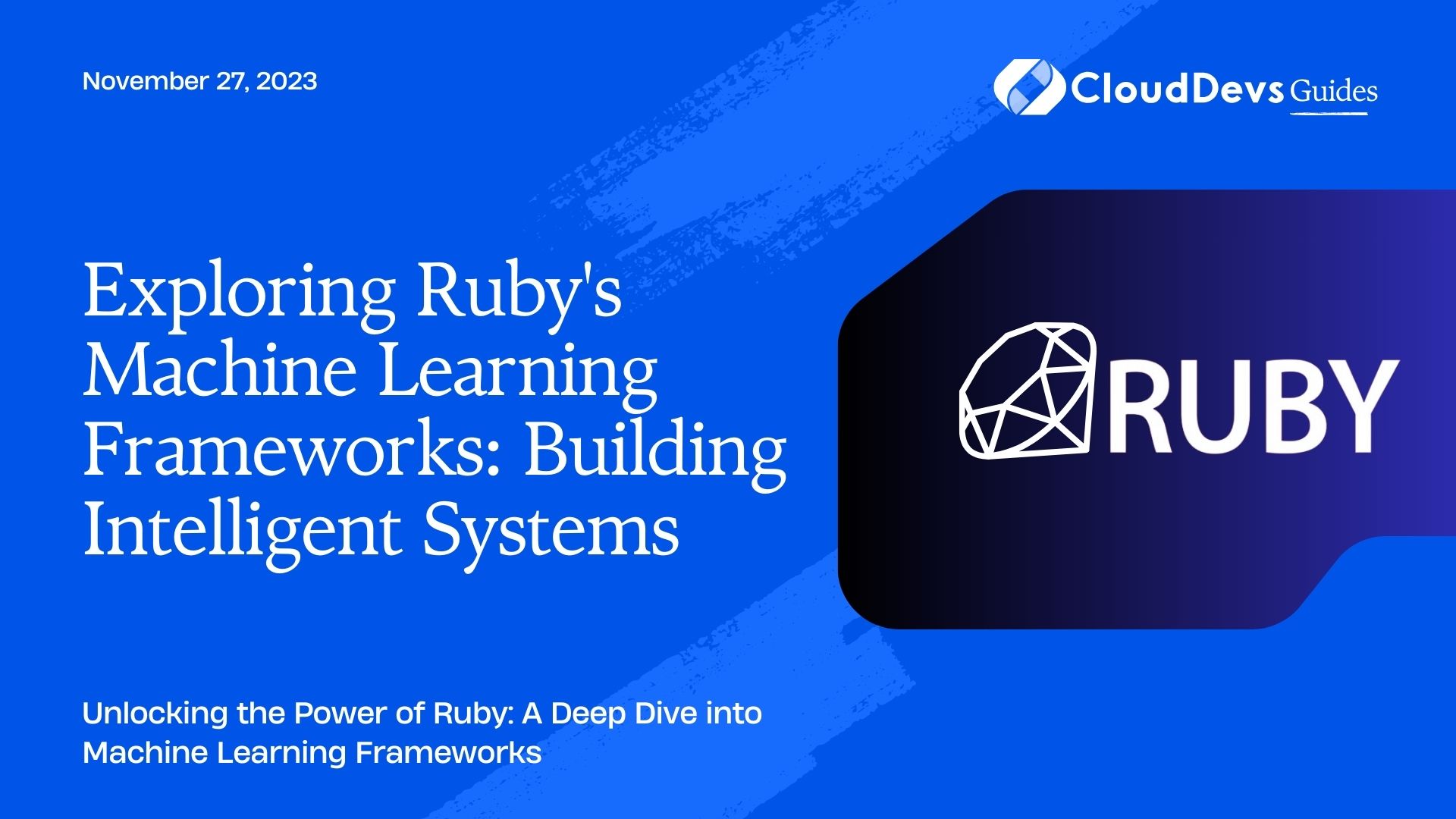Exploring Ruby’s Machine Learning Frameworks: Building Intelligent Systems
In the rapidly evolving landscape of technology, machine learning has emerged as a powerhouse, transforming industries and revolutionizing how we approach problem-solving. While Python has traditionally been the go-to language for machine learning, Ruby, a dynamic and versatile programming language, is steadily gaining ground with its own set of machine learning frameworks. In this blog post, we will embark on a journey to explore Ruby’s machine learning frameworks and learn how to build intelligent systems using these powerful tools.
Table of Contents
1. The Rise of Ruby in Machine Learning
Ruby, known for its elegant syntax and developer-friendly nature, might not be the first language that comes to mind when thinking about machine learning. However, the Ruby community has been proactive in developing tools that enable machine learning implementation. The rise of Ruby in the machine learning domain can be attributed to its ease of use, flexibility, and the collaborative spirit of its developers.
2. Setting the Stage: Essential Prerequisites
Before we dive into the exciting world of machine learning in Ruby, it’s important to set the stage by ensuring we have the necessary prerequisites in place.
2.1. Install Ruby:
If Ruby isn’t already installed on your system, head over to the official Ruby website (https://www.ruby-lang.org) and follow the installation instructions.
2.2. Install Bundler:
Bundler is a package manager for Ruby that helps manage project dependencies. Install it using the following command:
bash gem install bundler
2.3. Choose a Text Editor or IDE:
Select a text editor or integrated development environment (IDE) that you’re comfortable with. Popular choices include Visual Studio Code, Sublime Text, and RubyMine.
3. Exploring Ruby’s Machine Learning Frameworks
Ruby might not have as extensive a collection of machine learning frameworks as Python, but it does offer some powerful tools that can get the job done effectively.
3.1. SciRuby:
SciRuby is a collection of scientific and numerical libraries for Ruby, designed to bring the functionality of tools like NumPy and SciPy from the Python ecosystem. It includes:
3.1.1. NMatrix:
NMatrix provides support for n-dimensional arrays and matrix computations, essential for many machine learning algorithms.
ruby require 'nmatrix' a = NMatrix.new([2, 2], [1, 2, 3, 4]) b = NMatrix.new([2, 2], [5, 6, 7, 8]) c = a.dot(b) puts c
3.1.2. Daru:
Daru offers data structures for data analysis and manipulation, akin to pandas in Python. It’s invaluable for preparing and cleaning data before feeding it into machine learning models.
ruby
require 'daru'
data = {
a: [1, 2, 3],
b: [4, 5, 6]
}
df = Daru::DataFrame.new(data)
puts df.head
3.2. Ruby Machine Learning:
Ruby Machine Learning (RubyML) is an up-and-coming framework that aims to make machine learning accessible to Ruby developers. It provides tools for data preprocessing, model selection, and evaluation.
3.2.1. Installation:
Include the following line in your Gemfile to install RubyML:
ruby gem 'rubyml'
Example – Linear Regression:
Here’s a simple linear regression example using RubyML:
ruby
require 'rubyml'
data = RubyML::Dataset.from_csv('data.csv')
model = RubyML::LinearRegression.new
model.fit(data)
predictions = model.predict(data)
3.3. Scikit-Learn for Ruby:
Inspired by the renowned Scikit-Learn library in Python, Scikit-Learn for Ruby brings a plethora of machine learning algorithms to the Ruby ecosystem.
3.3.1. Installation:
Install Scikit-Learn for Ruby using:
bash gem install scikit-learn
Example – Decision Trees:
Here’s an example of building a decision tree classifier using Scikit-Learn for Ruby:
ruby require 'scikit-learn' data = ScikitLearn::Dataset.load_iris X = data.data y = data.target model = ScikitLearn::Tree::DecisionTreeClassifier.new model.fit(X, y)
4. Bridging the Gap: Challenges and Future Directions
While Ruby’s machine learning frameworks have made significant strides, there are still challenges to address. The ecosystem is not as mature as Python’s, leading to fewer pre-built models and tools. However, the Ruby community’s dedication and collaboration continue to push the boundaries.
In the future, we can expect to see:
- More Algorithm Implementations: As the Ruby machine learning ecosystem grows, more algorithms will be implemented, catering to a wider range of applications.
- Increased Performance Optimization: Efforts will be made to improve the performance of existing frameworks, making them more competitive in terms of speed and efficiency.
- Expanded Documentation and Tutorials: The availability of comprehensive documentation and tutorials will play a crucial role in attracting and supporting newcomers to the field of machine learning in Ruby.
Conclusion
As we conclude our exploration of Ruby’s machine learning frameworks, it’s evident that the landscape is evolving rapidly. While Ruby might not be the first choice for many machine learning practitioners, its community-driven frameworks offer a viable alternative. From SciRuby’s scientific computing capabilities to the promising RubyML and Scikit-Learn for Ruby, there’s a lot to experiment with.
So, whether you’re a Ruby enthusiast looking to expand your skill set or a machine learning practitioner curious about exploring new avenues, don’t underestimate the potential of Ruby in the world of intelligent systems. With determination, innovation, and collaboration, Ruby’s machine learning journey is bound to yield fascinating results.
Table of Contents








